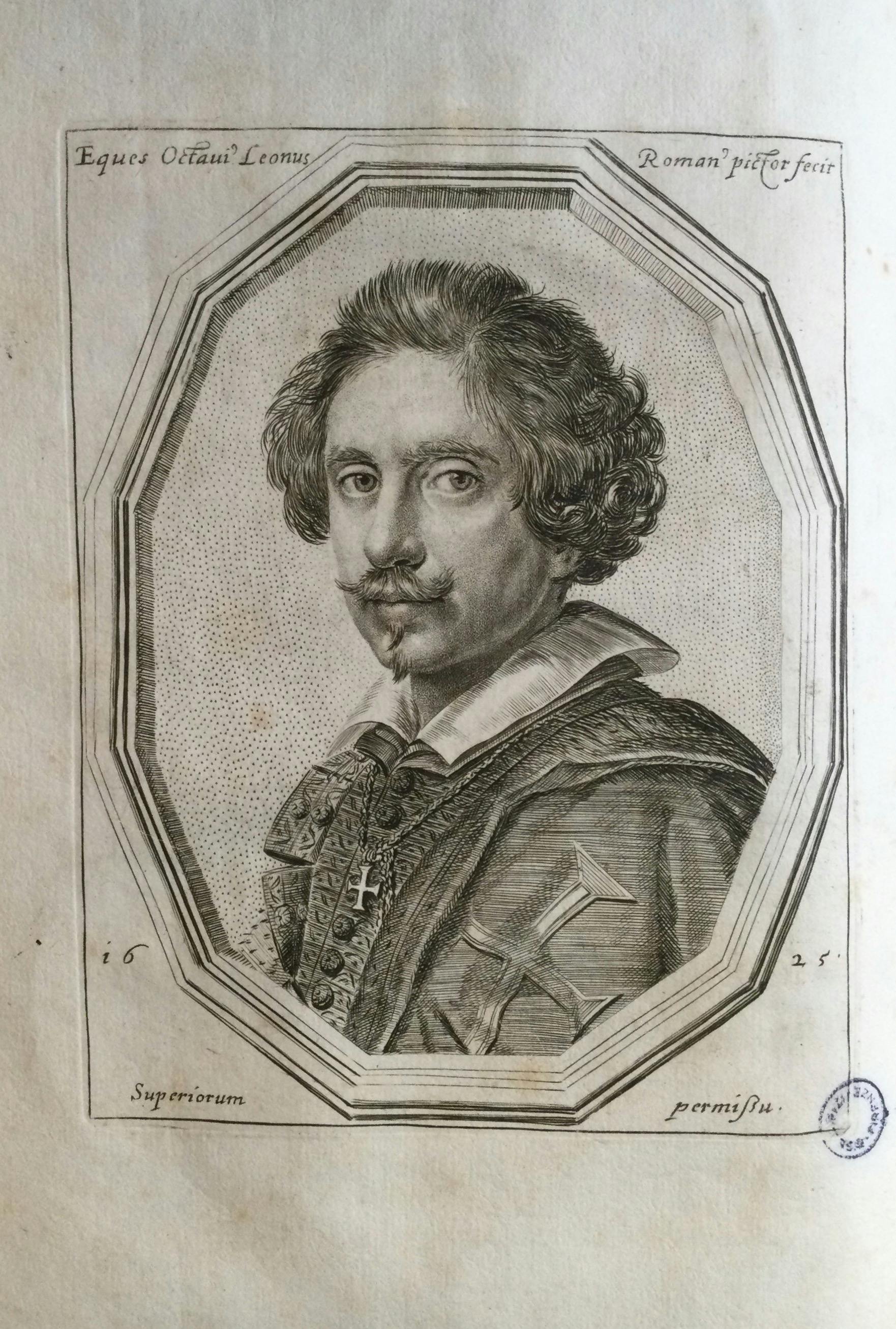Portraits of some famous painters of the 17th century, drawn and engraved in copper by the Knight Ottavio Leoni with the lives of the same by various authors
Ottavio Leoni (1578?-1630)
Ottavio Leoni was a painter, engraver, but above all a draughtsman. The son of the artist Ludovico Leoni, Ottavio was born in Rome and had high-ranking patrons from a very young age for whom he produced portraits and altarpieces such as Vincenzo I Gonzaga, Duke of Mantua, Cardinal Francesco Maria Bourbon Del Monte, who as protector of the Accademia di San Luca was able to facilitate Leoni's early entry into the company, Giovanni Angelo Altemps and Scipione Borghese. He is also responsible for a series of drawings on blue paper of scientists, mathematicians, artists and poets of the early 17th century depicted mostly in half-length form, including those of Galileo Galilei and Michelangelo Merisi known as Caravaggio, both preserved in the Marucelliana Library in Florence.
When Fausto Amidei, a Roman bookseller in the 18th century, came into possession of some engraving and etching plates engraved by Leoni in the years 1622-1625 depicting well-known Italian painters of his time, he had the idea of creating a printed publication in which these portraits would be accompanied by the stories of the lives of the subjects depicted. The project followed in the wake of the traditional art historiography inaugurated by Giorgio Vasari and then taken up by many of his followers over the following centuries, but was given an original twist in Amidei's proposal: the biographical notes to be used to accompany the portraits were already published and written by various authors, with the exception of the life of Carlo Maratta written by Giovanni Pietro Bellori, which at the time only existed in manuscript form. The biographies were mostly extrapolated from Le vite de' pittori, scultori et architetti by Giovanni Baglione - such as that of Leoni preceded by his engraved self-portrait - from Felsina pittrice vite de pittori bolognesi by Carlo Cesare Malvasia for that of Guercino and from Notizie dei professori del disegno da Cimabue in qua by Filippo Baldinucci for that of Gian Lorenzo Berini and reprinted with minor changes, additions and omissions. For Simon Vouet's biography, which is probably not available in unabridged form, the decision was made to assemble it by putting together fragments from various authors.
The volume contains a dedication by the editor to Livio de Carolis, Marquis of Prossedi - a wealthy patron of palaces and fountains between the capital and the Frosinone and Latina areas - and a note to readers, in which the plan of the work and the steps for its realisation are explained. A handwritten note on the possession of the work shows that it belonged to the 18th century Florentine artist Lamberto Cristiano Gori, who declared that he purchased it at an estate sale owned by Ignatius Hugford, brother of the Walloon monk Henry Hugford. From an early age, Gori learned the rudiments of drawing and the technique of scagliola, where he emerged as one of the most original interpreters of his time.
F.Borroni Salvadori, Ignazio Enrico Hugford, collezionista con la vocazione del mercante , in Annali della Scuola normale superiore di Pisa , classe di lettere e filosofia, serie III, vol. XIII, 4, Pisa 1983, p. 1056; Volti e storie. Ottavio Leoni (1578-1630). Ritrattista nell’Accademia colombaria e nelle raccolte fiorentine , a cura di P. G. Tordella, Firenze 2019.
